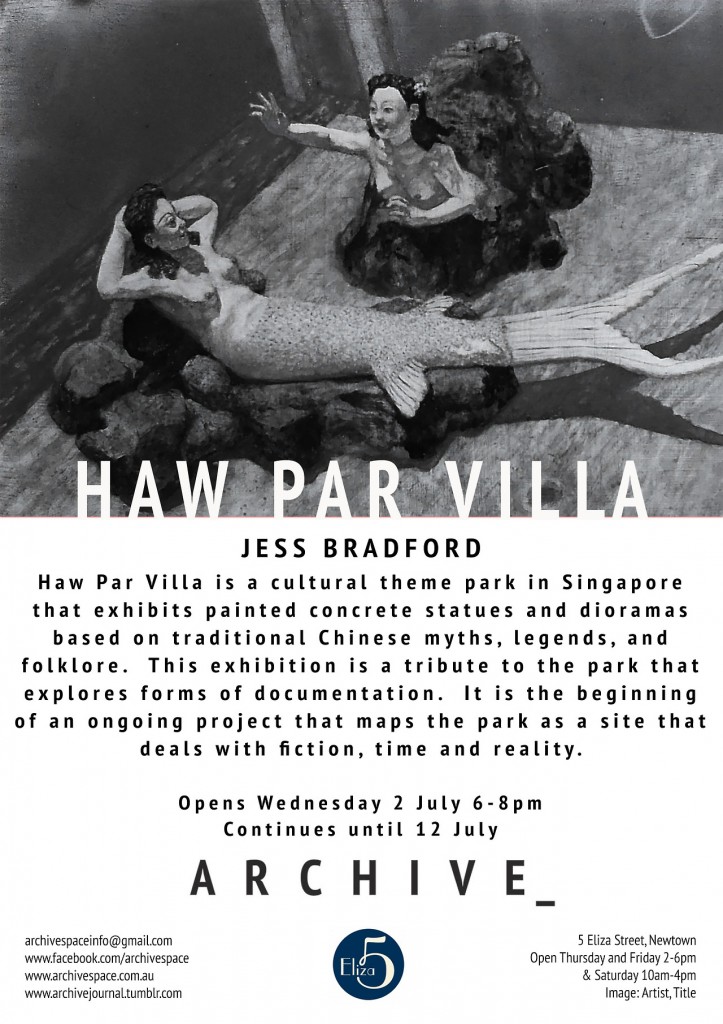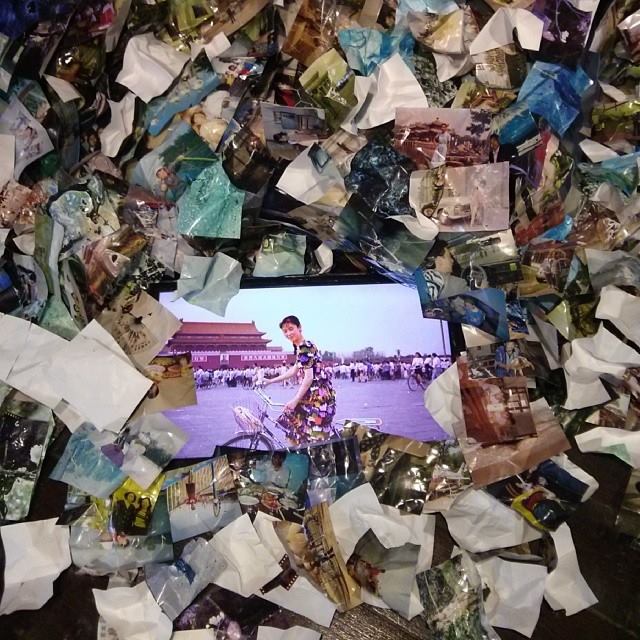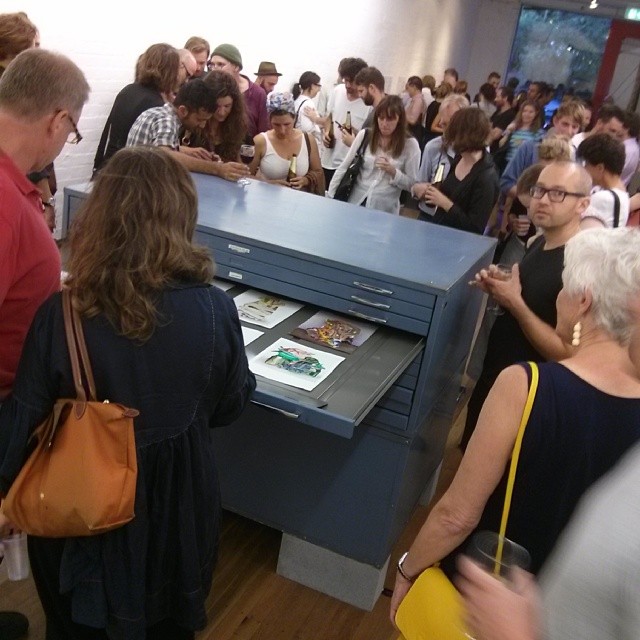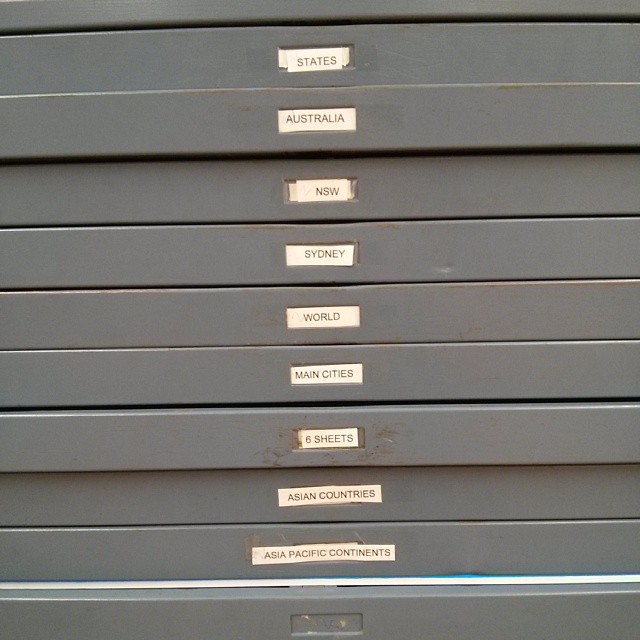I recently participated in the Archive Space Writers Program, reviewing Jess Bradford‘s exhibition Haw Par Villa which ran 2 – 12 July 2014. Here is the resulting text.
————
The cultural theme park of Haw Par Villa in Singapore was the subject of Jess Bradford’s recent exhibition at Archive Space. Originally conceived as a space of moral education for families, the internal narratives of the site have been subject to de- and re-construction, both physically and conceptually. Having visited there as a child, Bradford was prompted to return recently after discovering photographs of the site’s painted concrete sculptures in second hand stores. The exhibition Haw Par Villa saw the artist reconsider the park through an investigation of materiality and memory.
Just inside the gallery’s entrance was a wooden archway which Bradford had cut and painted to refer to the forms of the Villa itself. Weather-worn wave and cave formations were painterly rendered on the front of the structure, while on the reverse the artist had made no attempt to disguise its stand-in nature, securing the angular pieces of ply with the help of sandbags. Propped and propositional, this structure arched physically and metaphorically over the other works in the show, providing a portal through which the truths and fictions of representation could be considered.
Beyond the archway was a video piece depicting a walk through the villa through the eyes of a visitor. The footage began with a trip through a tunnel to the Haw Par Villa station. Filmed from the front of a driverless train, the perspective of this journey evoked the experience of a ghost train, pre-empting the theme park to come. A recording of a woman’s voice announced arrival at “Haw Par Villa” through a PA system, before the viewer was led through the gates of the park at a walking pace, to an accompanying ambient soundtrack. This sense of forward motion, combined with symmetrical one-point perspective, echoed the experience of walking through Bradford’s propped archway into Archive Space itself.
For several years now the artist has collected anonymous found photographs, and her recent practice has led to the recreation of these as objects intended to resonate beyond their pictorial surface. Two such photographs of the concrete figures in Haw Par Villa were incorporated into this exhibition in this way. The images, a bear seeming to attack a small child, and two mermaids, were painted in monochrome on small pieces of primed zinc. These were mounted within frames on the wall, making reference to their photographic origins, however once the viewer drew closer to examine the detail in these tiny objects, their presence beyond the fragility of paper became clear. The original photographer had transformed them from concrete to image, and Bradford had in turn translated this depiction to artefact, giving tangibility to someone else’s memories whilst adding to the compilation of images surrounding her own.
Re-encountering a place of childhood experience after so many years requires a reassessment of truth and reality. Disparate images can become worn away as concrete does when exposed to the elements, over which twisted memories form slowly, creeping and overtaking like lichen. Haw Par Villa interwove different modes and media to interrogate ideas of authorship, truth, representation and memory.





